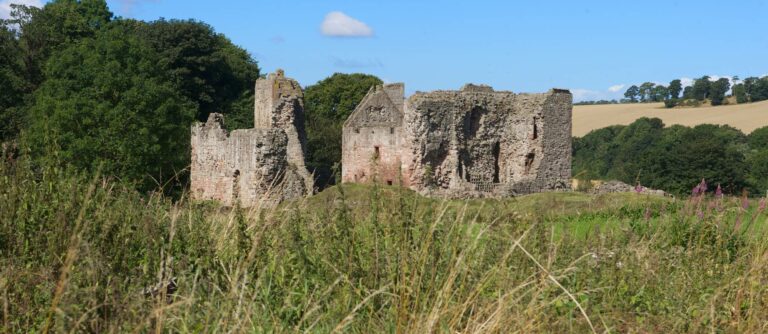Due to access restrictions in place as a precautionary measure while we undertake high level masonry inspections, there is currently no visitor access to this site.
One of Scotland's oldest remaining stone castles, Hailes Castle can trace its origins as far back as the early 1200s and is beautifully sited in the heart of East Lothian. Having seen conflict during the Wars of Independence and Oliver Cromwell's invasion with a siege or two in between. It was also a spot visited by Mary, Queen of Scots and her husband-to-be James Hepburn. The Castle is one of the best-preserved relics from the 1200s that Scotland has to offer. Beautifully set on the bank of the River Tyne in East Lothian, it was probably first built by the de Gourlay family in the 13th century and, functionally, was more likely to have been a manor house than a military fortress. Paying the price for association with the failed Balliol pitch for the Scottish crown, the de Gourlay's lost the castle and it passed to the Hepburn family. Rebuilding the castle after its having felt the effects of the Wars of Independence, Hailes prospered from more peaceful times from the mid-1400s under the Hepburns. James Hepburn, 4th earl of Bothwell and future third husband of Mary Queen of Scots, was probably born here in 1535. The couple even stayed here on the way to their wedding in 1567. The marriage was not to prove successful however and Hepburn was ultimately sent into exile in Denmark, with the Castle passing to the Stewarts, then the Setons. Turbulent times continued after the Battle of Dunbar nearby and Oliver Cromwell's forces partly slighted the Castle in 1650. As with the story of many of the ruins of East Lothian, conflict was never far away.
Hailes Castle can be found 1.5miles south west of East Linton and is open year-round to visitors, at no charge. Please note there is very limited parking available, please consider residents in the area and park responsibly.























